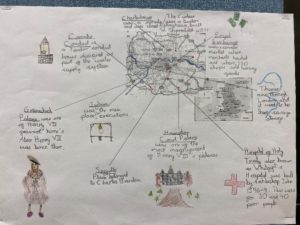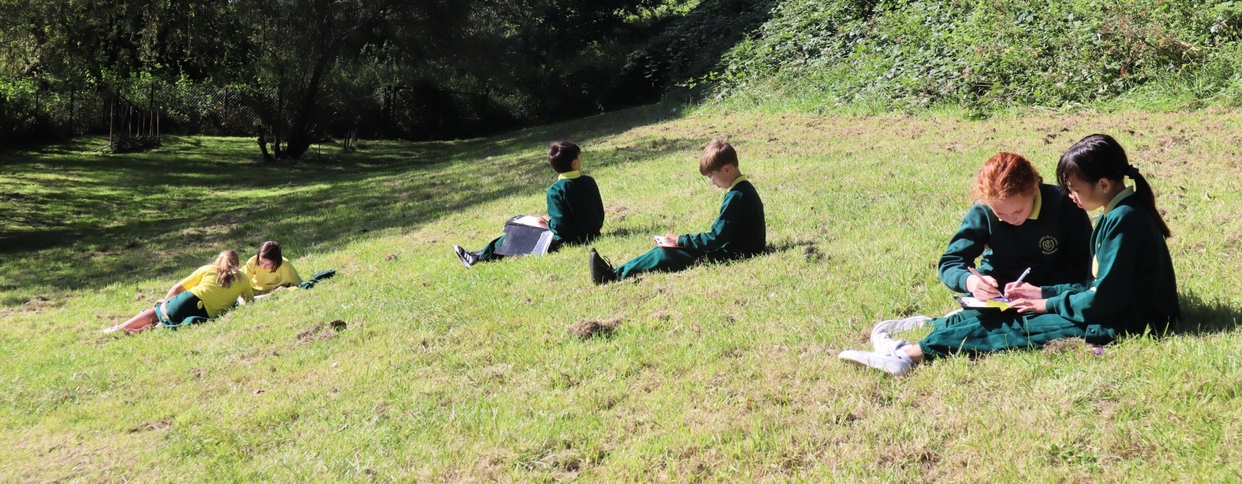
Geography Intent Statement
Geography is essentially about understanding the world we live in. At St Joseph’s, we believe that Geography helps to provoke and provide answers to questions about the natural and human aspects of the world. We aim to ensure that our children leave our school with the inspiration to become global, sustainable citizens. We feel it is important to nurture and encourage natural curiosity to shape children into inquisitive, questioning learners, who look closely at the world around them and begin to be able to interpret what they see. It is our intent to inspire children with interest and fascination about the world and its people that will remain with them for the rest of their lives.
Children are encouraged to develop a greater understanding and knowledge of the world, as well as their place in it. Our geography curriculum is shaped by our aim to enable all children, regardless of background, ability or additional needs to flourish, to become the very best version of themselves they can possibly be. Geography is, by nature, an investigative subject, which develops an understanding of concepts, knowledge and skills. The curriculum is designed to develop knowledge and skills that are progressive, as well as transferable, throughout their time at St Joseph’s and also their further education and beyond.
We teach the National Curriculum using the e-learning platform Oddizzi, which is supported by clear skills and knowledge progression. This ensures that skills and knowledge are built on year by year and sequenced appropriately to maximise learning for all children. It is important that children develop the skills of a geographer by fully immersing them in all areas of the subject. The local area is fully utilised to achieve desired outcomes, with opportunities for learning outside the classroom embedded in practise. School trips and fieldwork are provided to give first hand experiences, which enhance children’s understanding of the world beyond their locality.
EYFS
The EYFS skills are developed through the “Understanding the World” area of learning. The children are given a variety of experiences involving talk about our local environment and observations about the seasons and similarities and differences in places.
We believe it is important to build on the knowledge of our youngest children in EYFS as they move through the Key Stages.
In line with the National Curriculum, the principal aims of Geography at St Joseph’s are to ensure that all children:
-
- develop contextual knowledge of the location of globally significant places – both terrestrial and marine – including their defining physical and human characteristics and how these provide a geographical context for understanding the actions of processes
- understand the processes that give rise to key physical and human geographical features of the world, how these are interdependent and how they bring about spatial variation and change over time
They are competent in the geographical skills needed to:
-
- collect, analyse and communicate with a range of data gathered through experiences of fieldwork that deepen their understanding of geographical processes
- interpret a range of sources of geographical information, including maps, diagrams, globes, aerial photographs and Geographical Information Systems (GIS)
- communicate geographical information in a variety of ways, including through maps, numerical and quantitative skills and writing at length.

Helpful Websites:-
Up to date weather forecasts http://www.bbc.co.uk/weather
Activities, games and stories about Barnaby Bear’s travels for KS1 http://www.bbc.co.uk/schools/barnabybear
Newsround world current events http://news.bbc.co.uk/cbbcnews/hi/world/default.stm
Newsround UK current events http://news.bbc.co.uk/cbbcnews/hi/uk
KS2 geography support materials http://www.channel4.com/learning/microsites/E/essentials/geography/qmenu.shtml
Environmental themes
The children’s section has many useful facts, activities and animations and includes sections on: air, energy, land, climate change, people and lifestyles, resources and waste, water and wildlife.
http://www.environment-agency.gov.uk/fun/?lang=_e
Mapping
An introduction for Key Stage 2 on how maps work and how to interpret them. It includes these 8 sections: starting mapping, symbols, compasses and directions, grid references, understanding scale, measuring distance, relief and contour lines and compass bearings. http://mapzone.ordnancesurvey.co.uk/mapzone/index.html
Local street maps including a ‘find my nearest’ function, which can be used to locate features e.g. schools, list them and link them to a map. http://www.upmystreet.co.uk/
Search for local street maps by postcode, OS grid reference, place name or street name. Maps are extendable in eight compass directions. http://www.streetmap.co.uk/
Online mapping site which includes eye level ‘Streetview’ http://maps.google.co.uk/
Maps resized to show population sizes, income, etc. http://www.worldmapper.org/
World Atlas https://www.worldatlas.com/
Distant locations
Very child-friendly site for understanding development issues. http://www.globaleye.org.uk/
Excellent site for global citizenship issues. Children’s pages include details of the history, geography and environment, people and society and a fact file for 14 countries), ‘children’ (exploring the lives of children in less developed countries) and ‘food’ (issues such as farming and fair trade). http://www.oxfam.org.uk/coolplanet/kidsweb/index.htm
Includes a range of resources for information supporting distant locality studies. http://www.actionaid.org.uk/
Fair Trade https://schools.fairtrade.org.uk/take-action/fairtrade-fortnight-2021/
Images
The Geograph® Britain and Ireland project aims to collect geographical photographs and information for every square kilometre of Great Britain and Ireland, and you can be part of it. http://www.geograph.org.uk/search.php?i=41689877
Photographic images of countries which can be selected by continent, then by country. http://www.travel-images.com/
UK, Europe and USA images http://www.freefoto.com/
Panoramic images http://www.panoramas.dk/
Google Earth https://earth.google.com/web/



